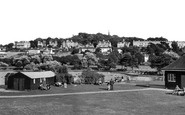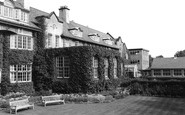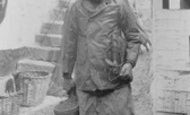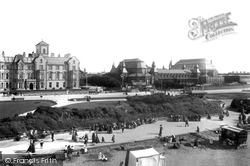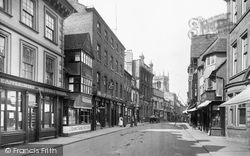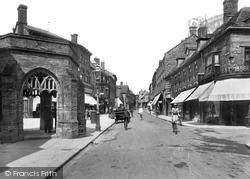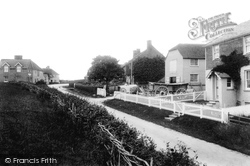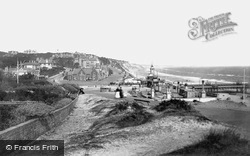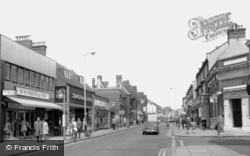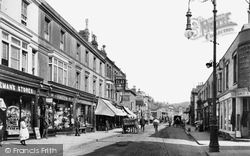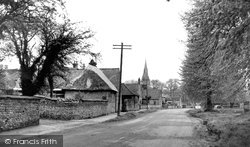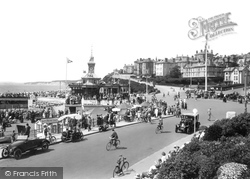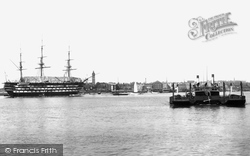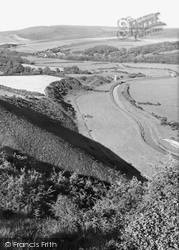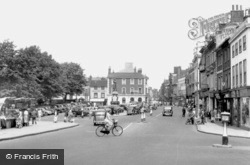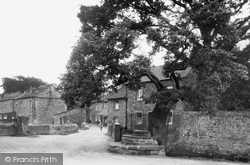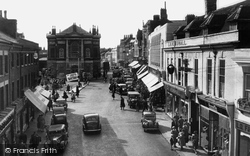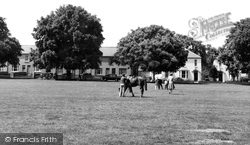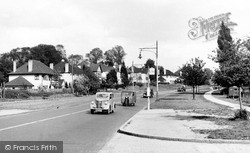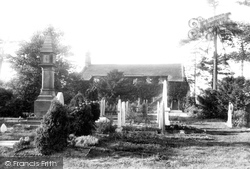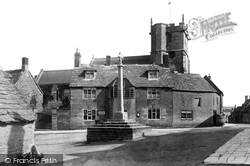Photos
Sorry, no photos were found that related to your search.
Maps
26 maps found.
Books
Sorry, no books were found that related to your search.
Memories
197 memories found. Showing results 11 to 20.
Granny Crees
I was born in Park House, Portishead in 1930. My grandmother was Ada Alice Crees (nee Seymour), who came to Somerset as a baby, but her brother was left behind in Wales with a relative. They lost contact for many years but but were ...Read more
A memory of Portishead
Early Years In Park Road
Born in 1947 to Ted & Cred Fowles, I lived in 3 Park Road until 1955 when I moved down the hill to Southsea. I started Tanyfron primary school in 1951 and went on to Penygelli Secondary school, Coedpoeth, in 1958. ...Read more
A memory of Tanyfron by
18 Happy Years
We moved into Avon Carrow in November 1991, just after the M40 motorway had been extended to Warwick, and started the most rewarding living experience of our mature lives. The Carrow has an interesting history for such a ...Read more
A memory of Avon Dassett in 2009 by
My Memories Of Kirkheaton
Kirkheaton was such a great place to live, I went to infant school at the bottom of Fields Way (I lived on Fields Way till I was 19 years old), I also went to Kirkheaton C of E School and can remember most of the ...Read more
A memory of Kirkheaton in 1956 by
Holmwood School Pupil.
I have many memories of my time at Holmwood School. I joined as a day boy in 1968, when the Headmaster was David Glass and I left around 1973 when the Headmaster was Johnny Clegg. I remember the trips we had in the old school ...Read more
A memory of Formby in 1968 by
My Great Grandfather
This is a photo of Henry Kitchen, my mother's grandfather, who was also one of Stanhope Forbes' favourite models. He was painted sitting in the rowing boat in Forbes' painting 'The Lighthouse', which now hangs in Manchester Art ...Read more
A memory of Newlyn in 1900 by
A Yokels Tale
A Personal Recollection of growing up during the last days of the pedestrian era in rural England by Tom Thornton A Yokel's Tale My earliest recollection of my Thornton grandparents, Alice and Tom, dates back to my pre-school ...Read more
A memory of Owslebury in 1941 by
Chingford Hatch
I remember the Manor pub, it used to have an air raid warning siren on the building. I remember hearing it once, testing it I think as the year was about 1956. I too remember the tea van which had an awning on it in the rain. As ...Read more
A memory of Chingford in 1956 by
Living In Cavendish Bridge
I grew from a boy into manhood during my time in Cavendish Bridge. My parents had the Old Crown Inn and at the age of 17 had my first "pub crawl" with my mates from the bridge through Shardlow starting at the ...Read more
A memory of Shardlow in 1962 by
Undertakers In Smallfield
Please can anyone tell me about the history and location of the undertakers in Smallfield? Also does anyone know what used to be where Churchill Rd (off Chapel Rd) was, Careys Wood and Gorse Drive, a relatively new housing estate?
A memory of Smallfield by
Captions
67 captions found. Showing results 25 to 48.
The concert pavilion was later used as a theatre and cinema and survived into the early 1960s; the conservatory was relegated to a roller-skating rink before being demolished in 1933.
Our photographer now proceeds east along the High Street, a relatively narrow street with a mix of 17th-century and later fronts, now pedestrianised.
The building on the left is the Monks' Conduit, a relic of the destroyed monastery, originally the place where the monks would have washed and shaved.
The Romans farmed here and constructed massive dykes that still perform a role in safeguarding the region's interests.?They also founded the port of Romney.
Bournemouth is a relatively new community, for all of this area was wild heathland 250 years ago.A Mr Tregonwell built a home here with the intention of establishing a resort.
High Street North is a relatively undistinguished and typical London suburban shopping street: the exuberance of the Town Hall complex is forgotten.
The fact that Crewe was a new town with a relatively young population is, sad to say, reflected in the number of names that surround the war memorial in the foreground.
The elegant lamp posts were a relatively new addition to this picturesque commercial setting, and although the rails carrying the tramcars are evident, it is clear that pedal-power and horse-drawn
This view of Cottesmore is typical of Rutland's visual feast of limestone and ironstone villages, set in a rolling, spired landscape of hedges and walls which the hunt can, in the main, take in its stride
As a relatively new town, Bournemouth was able to develop as a holiday resort unencumbered by the street pattern and buildings of an older settlement; its main purpose has always been to cater for thousands
In 1862 she became a boys' training ship, a role she fulfilled until 1906 when she was sent for breaking up.
This is a relic of the past, when the Lord of the Manor was entitled to keep a pigeon house, and the birds could feed off his tenants' crops.
The small market on the left is a relic of the town's original Royal Charter.
Agriculture dominated the village until the end of the 17th century, when Arkle Beck was harnessed for cotton mills. Low Mill, which only closed in 1970, was claimed to be the oldest in the country.
Our photographer now proceeds east along the High Street, a relatively narrow street with a mix of 17th-century and later fronts, now pedestrianised.
On the right are L D Faires, wine merchants; Annette's, ladies' fashions; and, under the lock sign, Henshall's, ironmongers. Beyond is the 1930s Woolworth's, which took over from Henshall's in 1959.
The houses behind are late Victorian.
Here, in a relatively elaborate tomb, lies Everard Digby, who died in 1628, namesake of Sir Everard, who was executed for his part in the Gunpowder Plot in 1605.
Here, in a relatively elaborate tomb, lies Everard Digby, who died in 1628, namesake of Sir Everard, who was executed for his part in the Gunpowder Plot in 1605.
His un-returned love for Rose Dyneley, a relative of the Towneleys, inspired his poem the Faerie Queen, but in dedicating it instead to his queen, Elizabeth, was he hopeful or just patriotic?
It would have been pleasant enough to live alongside a relatively up-market road of wide verges and young trees, illuminated by attractive street lighting.
A Puritan preacher, John Brereton, probably a relation of the Parliamentary commander, was put in his place.
The Town Pump and Market Cross (centre) have ancient steps and a relatively recent shaft, erected to celebrate Queen Victoria's diamond jubilee in 1897.
On the right are L D Faires the wine merchants, Annette's ladies fashions, and under the lock G W Henshall, ironmongers and builders' merchants.
Places (0)
Photos (0)
Memories (197)
Books (0)
Maps (26)








